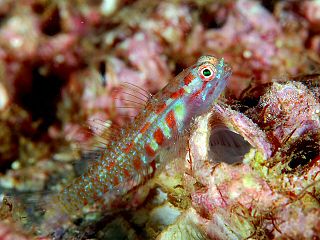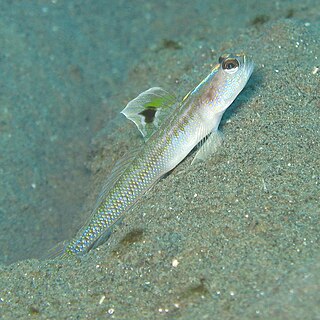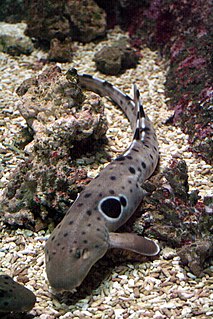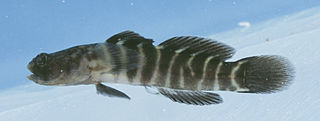
Cirrhilabrus is a genus of fish in the family Labridae native to reefs in the Indian and Pacific Ocean, commonly kept in aquaria.

Eviota is a genus of fish in the family Gobiidae, commonly as dwarfgobies found in the Indo-Pacific region, where it is distributed from Japan to Australia and from Africa to Pitcairn Island. Species are mainly associated with coral reefs. Many of these fish are short-lived, with life cycles as brief as 3.5 weeks in the tropics. Some species are hermaphrodites and some representatives live symbiotically among the tentacles of the mushroom coral.

Acentrogobius is a genus of gobies native to marine, fresh and brackish waters of the coasts of the Indian Ocean and the western Pacific Ocean.

Vanderhorstia is a genus of gobies native to the Indian and Pacific oceans. The name of this genus honours the Dutch biologist Cornelius van der Horst (1889-1951) of the University of The Witwatersrand, Johannesburg, who was well known for his interest in marine biology.

Tomiyamichthys is a genus of gobies found from the Red Sea through the Indian Ocean to the western Pacific Ocean. The name of this genus honours the Japanese ichthyologist Itiro Tomiyama of the Tokyo Imperial University, who described the type species, Tomiyamichthys oni, in 1936.

Paracheilinus is a genus of flasher wrasses, native to the Indian Ocean and the western Pacific Ocean.

Lutjanus is a genus of snappers found in the Atlantic, Indian, and Pacific Oceans. They are predatory fish usually found in tropical and subtropical reefs, and mangrove forests. This genus also includes two species that only occur in fresh and brackish waters.

Hemiscyllium is a genus of sharks in the family Hemiscylliidae.
The Triton epaulette shark is a species of bamboo shark in the genus Hemiscyllium, that is composed of nine morphologically similar, yet distinct sharks that are geographically restricted to New Guinea and northern Australia. Hemiscylliidae are small nocturnal sharks aptly named "walking sharks" who exhibit a "crawling" movement while foraging on the ocean floor for fish and benthic invertebrates.

Amblygobius is a genus of fish in the family Gobiidae found in the Indian and Pacific Ocean.

Cryptocentrus also known as Watchman gobies, and one of the genera known as shrimp gobies or prawn gobies, is a genus of gobies native to tropical marine waters of the Indian and Pacific oceans.

Cercamia is a genus of fishes in the family Apogonidae, the cardinalfishes. They are native to the Pacific and Indian Oceans.

Asterropteryx is a genus of fish in the family Gobiidae found in the Indian and Pacific Ocean.

Gobiosoma is a genus of gobies native to fresh, brackish and marine waters of the Americas.

Grallenia is a genus of fish in the family Gobiidae native to the western Pacific Ocean.

Psammogobius is a genus of fish in the family Gobiidae found in the Atlantic, Indian and Pacific Ocean.
Sueviota is a genus of fish in the family Gobiidae native to the Indian and Pacific Ocean.

Trimma is a genus of fish in the family Gobiidae native to the Indian and Pacific Ocean. Together with members of the genus Eviota, they are known commonly as pygmygobies or dwarfgobies.
Navigobius is a genus of fish in the family Microdesmidae native to the Indo-Pacific Ocean.

Psammogobius pisinnus, the sandslope goby, is a species of goby in the family Gobiidae from Australia and New Guinea.

















